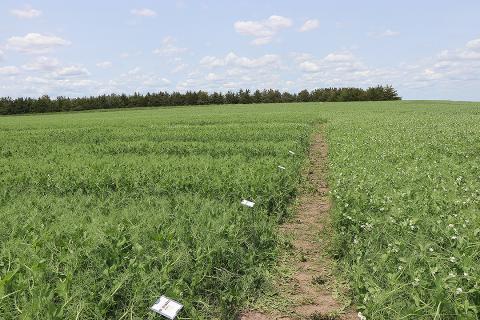Results for 2023 Nebraska Pea Variety Testing Released
September 21, 2023
The 2023 trials included an assortment of winter and spring peas from ProGene, Meridian Seeds, Seed Ranch and Valesco Genetics.
Millets for a Sustainable Future
September 15, 2023
New research is being conducted in the Nebraska Panhandle on ways to increase production of millets, an ideal dryland crop with short growth duration and exceptional nutrition, particularly for gluten-sensitive and diabetic individuals.
2021 Pea Variety Trial Results Available Online
February 10, 2022
Pea variety trials were conducted at three dryland sites in the Panhandle and southwest Nebraska — Box Butte County (19 varieties), Cheyenne County (19 varieties) and Perkins County (25 varieties) — plus two irrigated trials in Scottsbluff and Cheyenne County.
Winter Field Pea as a Fall-planted Broadleaf Crop for the Panhandle?
October 7, 2021
For the first time, winter field pea varieties are being tested in Nebraska as a winter crop, as it has the potential to increase a wheat-based dryland crop production system's sustainability, and economic viability of dryland farming in the Nebraska Panhandle and High Plains in general.
2020 Proso Millet Variety Trial Results Available Online
March 10, 2021
Results of University of Nebraska-Lincoln’s 2020 variety trials for proso millet have been compiled and are now available on CropWatch.
2020 Pea Variety Trial Results Available Online
December 3, 2020
Pea variety trials were conducted at three sites in the Panhandle and southwest Nebraska: Box Butte County near Alliance (28 varieties), Cheyenne County near Sidney (28 varieties), and Perkins County near Venango (33 varieties). Results are now available.
Improving Nitrogen Management in Dryland Winter Wheat Production
September 3, 2020
Over the past two years of the study across multiple locations, we found that yield response to applied N rates was evident only in the wet year.
Alternative Crops Program Investigates Growing Mint in Western Nebraska
March 24, 2020
Mint is not grown commercially in Nebraska on a large scale yet – there are less than 500 acres – but a project at the University of Nebraska Panhandle Research and Extension Center at Scottsbluff is aimed at providing answers about whether farmers could grow it here and which varieties might grow best.








